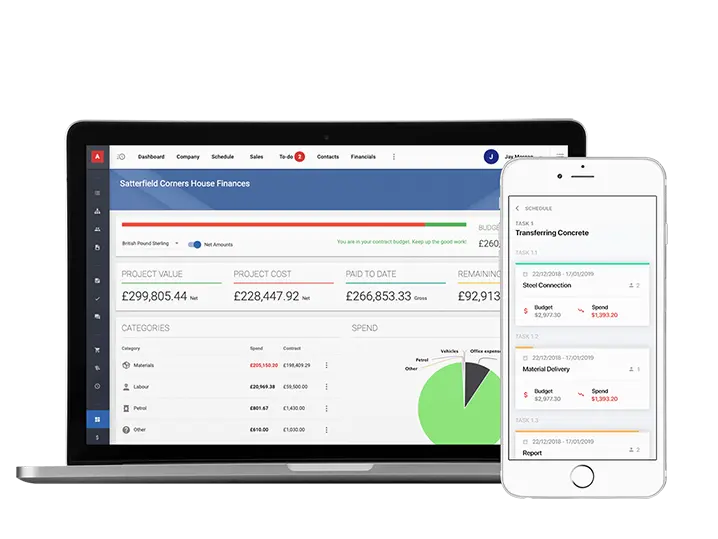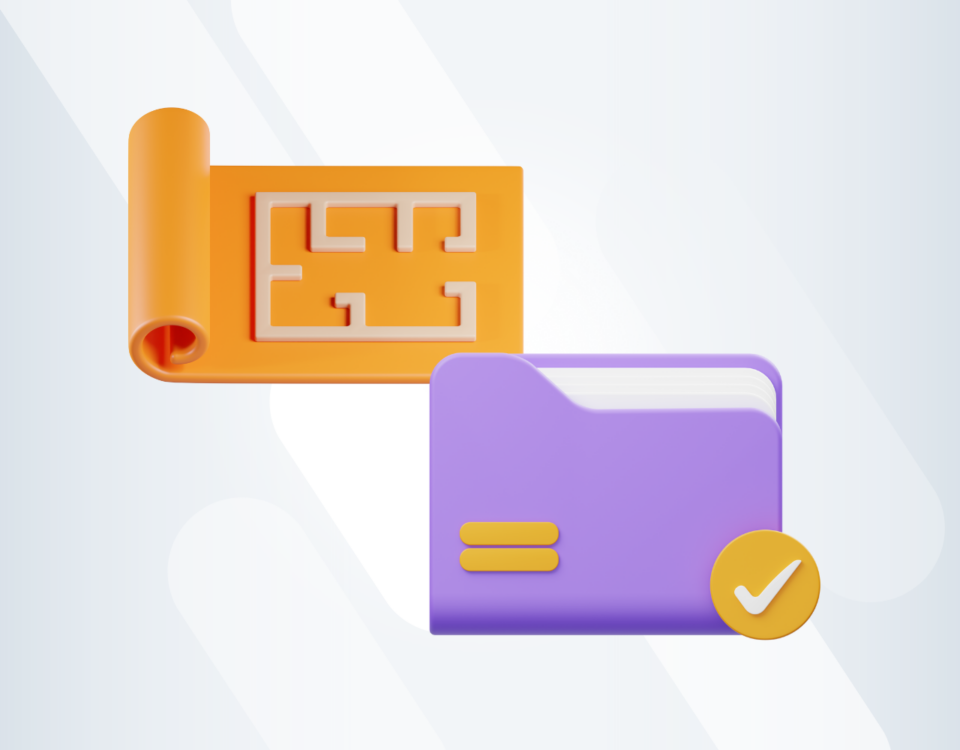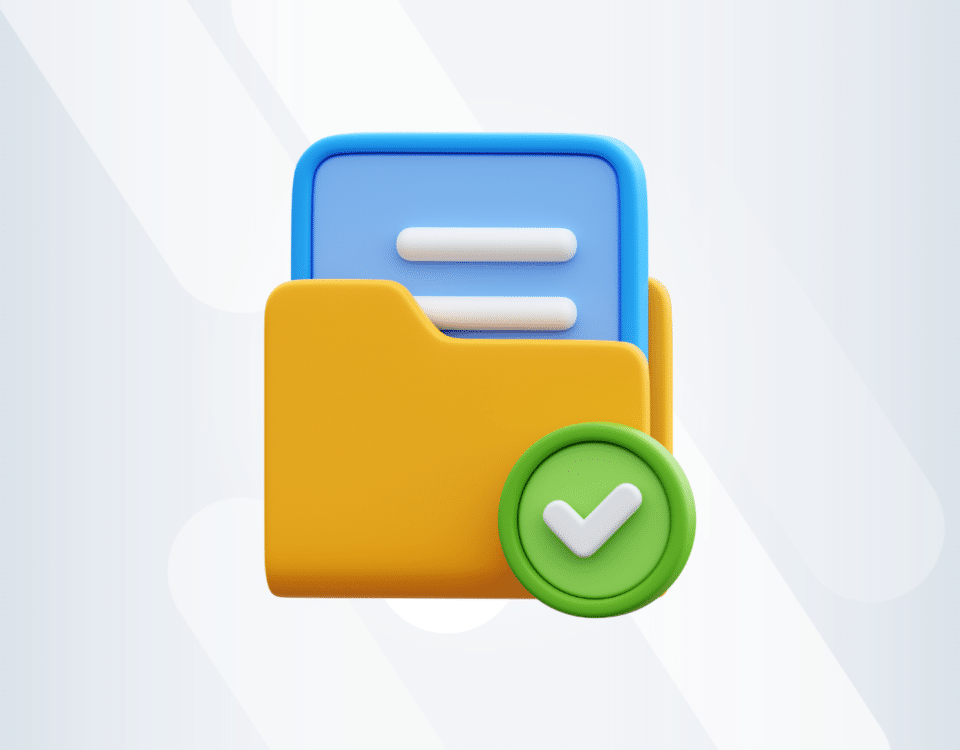Construction Tips, News & Best Practices
Getting It Right: Cost Forecasting in Construction

Karolina Dobrowolska
Content Marketer
Forecasting is at the heart of construction project success.
It's more than a financial exercise. Sound forecasting is the cheat code to success. Check this guide and find out how to deal with the forecasting process.
What is forecasting in construction?

Forecasting in construction is the process of making predictions of a construction project's possible costs and outcomes. Forecasts are based on an analysis of past projects and current project data.
Forecasts are not wild guesses. They clear out the uncertainties around the project cost and help define clear objectives for all parties involved in a delivery.
"Forecasting tends to be looking into the future, trying to predict what the future budget is to be."
Dale Shermon, Group Head of Professionalism at QinetiQ
What do you need to know to drive project success?

There are a few factors that you need to consider to deliver the most accurate cost forecasts:
1) Historical Data
How do you build cash flow forecasts when work hasn’t started yet?
You’ve probably delivered similar projects so look at the historical data and try to analyse:
- How much did labour, materials, and transport cost you back then?
- What has changed since then in your company: new processes, new employees, or different materials?
- Are there external factors influencing the construction industry: recession, price spikes, or supply chain uncertainty?
Try to compare your company's current situation to the information from past projects. What has changed? The analysis should give you an idea of possible expenses and a solid base for further forecasting.
You could use software to analyse historical data and handle construction accounting processes.
2) Project Scope
To predict a project's cost, you need to know what the project is about.
It seems simple, but we often focus only on the most critical and general tasks in project forecasting.
Unfortunately, the devil is in the details. And these details can heavily impact our project duration and final cost.
One of the project management techniques to deal with it is Work Breakdown Structure (WBS).
Work Breakdown Structure (WBS) is a project broken into deliverables with defined costs, scope, and deadlines.
With WBS, you can define and organise project tasks to deliver work with the desired budget, duration, and quality.
3) Project Duration
Project duration is strictly connected to the project scope.
A construction project is a network of related tasks that occur in a specific order. After all, you can't build something from materials that haven't arrived.
That's why in creating your WBS (or any other technique you choose to predict costs), pay attention to an expected delivery date.
Don't be a project manager who works too optimistically and gets hit with delays at every corner.
Instead, use historical data to see how much time your team took to complete specific tasks.
Leave some wiggle toom for unforeseen delays.
Also, consult your team on proposed deadlines, and as the project launches, track the delivery and end result to start with even more accurate data next time.
4) Labour Cost
Did you know that labour accounts for 20% to 40% of a project cost?
It’s an essential expense that’s extremely difficult to predict.
Why?
- productivity of your employees changes with time
- different skills are required for different stages of work
- employees costs are more than just the hours they work (holiday pay, superannuation, and sick leave)
- as a project progresses, many factors can impact labour demand
That's why you shouldn't focus only on working hours in your forecast.
Instead, try to break your project into smaller deliverables requiring unique skills or assets to complete.
Once you know what key skills are necessary to deliver a task, you can assign an appropriate team member and calculate their working time.
What are the three biggest challenges in cost forecasting?

-
Compliance
Project forecasting is not just "pure guesswork."
At the same time, it's easy to make a mistake and create a forecast that ultimately does not fit how things are.
Why? Many factors can impact your business:
- background and approach of the person responsible for a forecast
- the accuracy level of WBS or cost reports
- level of report standardisation in your company
- cash flow management techniques
- expectations and requirements of your clients
As a project manager, you must manage all these aspects to deliver accurate forecasts.
"A major challenge when it comes to cost forecasting is having access to data points that accurately describe all aspects of a given construction project.
“For example, if there are no exact comparisons or historical data available due to unusual conditions or complexities associated with a particular job site or job type – then predicting accurate costs becomes difficult."
Max Benz, Founder and CEO at BankingGeek
-
Stakeholder management
A construction project is collaboration at its finest.
It's constant communication with your team, subcontractors, and suppliers.
And it can be one of the biggest obstacles in consistent cash flow forecasting. Why?
- information from suppliers comes too late
- terms of cooperation from a contractor are incomplete or inaccurate
- communication is slow or doesn't exist at all
And you still need to manage your contractors and deliver sound forecasts in this information chaos.
"Don’t forget the human factor – stay in close communication with your team members throughout the process so that any changes or discrepancies can be identified quickly and avoided altogether."
Lisa Dietrich, Partner at Girokonto.io
-
Fast and unpredictable changes
The construction industry is unpredictable (understatement).
Could you imagine the global pandemic, interrupted supply chains, and rising inflation a few years ago?
Many external factors can change your project reality completely:
- client's expectations and the project's scope
- external factors like weather, oil/gas prices, raw material cost
- terms of cooperation with contractors
- changes in the economy: inflation, government regulations, and the pound's strength.
At the same time, many construction projects last more than a year. And in a year, anything can happen.
So, how to know how much money you'll need if you don't know in what reality you'll be operating?
Unfortunately, it's a challenge for every forecaster. And it's one of the most common reasons for exceeding budget.
"The main challenge lies in obtaining reliable and accurate data which is representative of the project, while also taking into account external influences such as market trends and inflation.
"The main challenge lies in obtaining reliable and accurate data which is representative of the project, while also taking into account external influences such as market trends and inflation. “It’s essential that all estimations are based on up-to-date information and fluctuations in order to avoid future issues or budgeting problems."
Robert Hoffmann, CashbackHero
5 techniques for accurate construction forecasting
-
Never stop re-forecasting
Creating accurate forecasts takes a lot of work due to fast and unpredictable changes.
One of the techniques to deal with it is never to stop re-forecasting.
Re-forecasting has many benefits:
- better project control
- more informed decisions
- fewer mistakes in the future
- more suitable forecasting method developed with experience
Your forecast shouldn't be a static document you create before work starts and then forget about it.
If you do that, you end up with a worthless set of numbers that doesn't help your project.
Instead, you should revisit your calculations regularly and adapt them to the new reality as the project progresses.
-
Foster a collaborative environment
The people you're working with are key to your forecast success.
Your contractors, suppliers, and employees often know better how much time, money, and effort each task takes.
Also, they're first to know if any change occurs and if there's a need to update the forecast.
That's why, try to foster a collaborative environment with continuous improvement and communication.
Without it, you're left alone with a much higher chance of inaccurate forecasts.
-
Use technology to cost forecast
"The most efficient technique for accurately predicting future costs is to use analytical software that takes into account historical performance metrics from previous projects and combines them with real-time data from current projects in order to create meaningful projections for future jobsites."
Max Benz, Founder and CEO at BankingGeek
You can do your forecast on paper or in Excel.
But you must know that it exposes you to a much higher risk of mistakes. Not to mention extra time and effort spent on manual calculations.
But why else shouldn't you use traditional tools for forecasting?
- it's much harder to update your forecasts
- you can't analyse the project's progress
- it's impossible to develop more customisable forecasting methods
- you can't collaborate with your team on a document in real time
- it takes more time to find specific information in complex calculations
Luckily you don't have to.
Nowadays, many solutions can speed up your work and support you throughout the process, like Archdesk.

Archdesk is a construction business management platform that provides solutions for construction-specific challenges.
Our platform supports cost forecasting and delivery of construction projects giving you a complete overview of your company's financial health.
-
Automate processes
With the use of technology, you can automate your forecasting process. And definitely, you should.
It will free you from manual and repetitive time, giving you more time on tasks that counts, like analyses and strategic decisions.
You can automate your processes with the use of software like Archdesk. The system assists in repetitive tasks like gathering data and creating reports.
Thanks to that, within a few clicks, you can track the changes, update tasks' importance, and verify contract specifications without spending long hours on it.
Of course, you can also manage without automation, but in a highly competitive construction market, it means losing customers to your competition.
"Accurate forecasting is imperative, and where spreadsheets and unconnected data can kill business.
Archdesk helps your business forecast the actual, not the assumed, enabling you to make informed and meaningful decisions based on a holistic “Control Centre” of your business cash and the related activities influencing it."
Richard Brotherton, Chief Revenue Officer at Archdesk
-
Build workflows
Having the same data stuck in different files or departments is a nightmare for anybody building forecasts.
That's why try to build a forecasting workflow. It means a sequence of steps to fulfill to create an accurate cost prediction.
You must also collaborate with your team and stakeholders to make it work. After all, they have data essential for your calculations.
Without a proper workflow, you risk organisational chaos, much longer and inefficient forecasting process.
They can be built in a construction system, like Archdesk, but you can also use more traditional methods.
How to improve your forecasting

1) Don't be too optimistic
A quality project delivered fast and with a small cost - a dream of every construction business.
Many forecasters succumb to this temptation and create forecasts that look fantastic on paper but have no real chance.
That's why try to create at least two forecasts. One optimistic and the other more conservative (with less favorable external conditions).
It may be discouraging to create more than one forecast. It takes extra time and effort. Also, it's counterintuitive as our brain likes certainties and precision.
But, creating more than one forecast has much more benefits than drawbacks:
- makes you feel safer about the project's progress
- helps in strategic decisions making
- wipes out many uncertainties in the a delivery process
2) Understand your client
The success of your forecast depends highly on external factors. One of them is your client.
Your clients aren't directly involved in the forecasting process but factor into budget and income.
That's why before starting your calculations, try to understand your client better:
- what's important (tasks, quality, deadlines) to your client?
- what possible outcomes does your client expect?
- how do you manage expectations and costs?
- how does your client want to track project progress?
- do current trends in your sector impact client decisions?
With all these aspects in mind, you have a bigger chance to deliver a project that fits all expectations.
3) Get more knowledge on project forecasting
Is construction forecasting still foreign to you? It doesn't have to be.
It's a complex process, but once you get the knowledge, it will be easier with every new analysis.
Luckily on the Internet, there are many possibilities to improve your forecasting skills.
For example, on the Udemy platform, there's a course called Construction Project Cash Flow Forecasting which teaches:
- the basics of cash flow forecasting
- what is a negative cash flow and how to minimise it
- how to estimate your work, time, and expenses
- the concept of the time value of money, how to use it to improve your forecasts
- how to create your first cash flow forecasts
The access is $19,90, but the platform often offers discounts or limited offers with courses for free.

4) Invest in a professional support
Did you worry about cash in your project? Lying awake at night and analysing how much money it will take you?
Nocturnal forecasting is terrible for you and your business.
If you feel you've hit a brick wall and you're completely lost in your calculations, you can always invest in professional support.
Many financial forecast specialists can guide you through the process and show you step-by-step how to improve.
Sure, it will cost some money, but once you solve your blockers, it will be easier with each new forecast. And you'll be able to sleep soundly without worrying about another payment.
Frequently Asked Questions
What are the benefits of construction forecasting?
Properly prepared cost forecast has many benefits:
- higher chance of delivering a project within budget and on schedule
- increased collaboration between the company's departments
- better knowledge of your business
- roadmap for further financial planning
- better judgments of deadlines and strategic decisions of a project
- a baseline for cash flow management
What is the most important rule of forecasting in construction management?
The most important rule in any type of forecasting: your calculations will always be wrong. But that’s completely normal as you cannot control everything.
Its goal is to show the possible project's path, with expected outcomes and predictions on how much cash (or other resources) it might require.
Based on that knowledge, you can adapt your strategy to manage your budget and obtain the expected level of funds.
What is Cash Flow Forecast?
Cash flow forecasting predicts how much money will come in and out of business in a specific period. It helps in establishing the cash balance and assures the company's financial safety in the long term.
Also, cash flow forecasting is extremely useful in deciding future projects and investments.
You might also like
February 29, 2024 • 7 min read
Utilizing the human-first approach to construction projects to drive higher results.
July 3, 2023 • 6 min read
8 Best Construction Drawing Management Software (2023): A Comprehensive Guide
Find all the information you need about the construction drawing management software tools available on ...June 14, 2023 • 6 min read
The 11 Best PlanGrid Alternatives (2023)
Looking for a great alternative to PlanGrid software? Check out the 11 best construction software tools ...June 14, 2023 • 4 min read
How to win at CIS 340 and make taxes a breeze
CIS 340 is a legal obligation for contractors. But getting it right isn’t straightforward. Want ...




